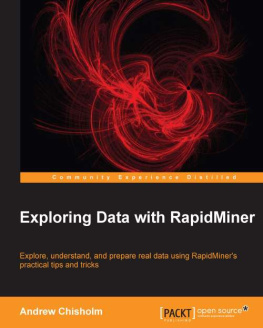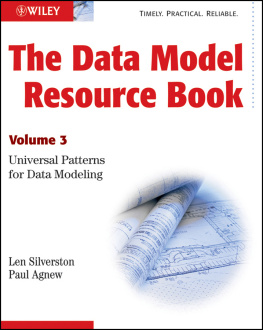Dejan Sarka - Exploring Hidden Patterns and Rules in Your Data
Here you can read online Dejan Sarka - Exploring Hidden Patterns and Rules in Your Data full text of the book (entire story) in english for free. Download pdf and epub, get meaning, cover and reviews about this ebook. year: 2021, publisher: Apress, genre: Children. Description of the work, (preface) as well as reviews are available. Best literature library LitArk.com created for fans of good reading and offers a wide selection of genres:
Romance novel
Science fiction
Adventure
Detective
Science
History
Home and family
Prose
Art
Politics
Computer
Non-fiction
Religion
Business
Children
Humor
Choose a favorite category and find really read worthwhile books. Enjoy immersion in the world of imagination, feel the emotions of the characters or learn something new for yourself, make an fascinating discovery.
- Book:Exploring Hidden Patterns and Rules in Your Data
- Author:
- Publisher:Apress
- Genre:
- Year:2021
- Rating:4 / 5
- Favourites:Add to favourites
- Your mark:
- 80
- 1
- 2
- 3
- 4
- 5
Exploring Hidden Patterns and Rules in Your Data: summary, description and annotation
We offer to read an annotation, description, summary or preface (depends on what the author of the book "Exploring Hidden Patterns and Rules in Your Data" wrote himself). If you haven't found the necessary information about the book — write in the comments, we will try to find it.
Exploring Hidden Patterns and Rules in Your Data — read online for free the complete book (whole text) full work
Below is the text of the book, divided by pages. System saving the place of the last page read, allows you to conveniently read the book "Exploring Hidden Patterns and Rules in Your Data" online for free, without having to search again every time where you left off. Put a bookmark, and you can go to the page where you finished reading at any time.
Font size:
Interval:
Bookmark:
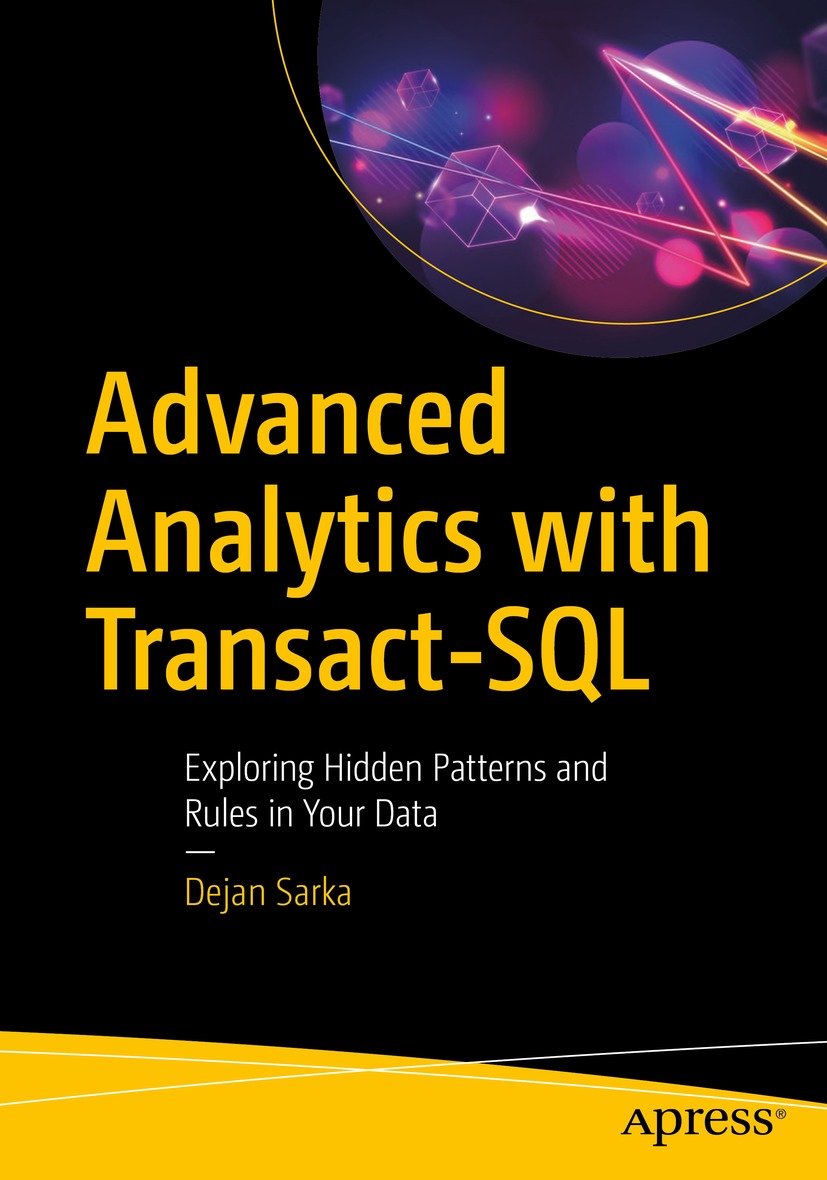

This Apress imprint is published by the registered company APress Media, LLC part of Springer Nature.
The registered company address is: 1 New York Plaza, New York, NY 10004, U.S.A.
If you want to learn how to get information from your data with Transact-SQL, or the T-SQL language, this book is for you. It teaches you how to calculate statistical measures from descriptive statistics, including centers, spreads, skewness, and the kurtosis of a distribution, find the associations between pairs of variables, including calculating the linear regression formula, calculate the confidence level with definite integration, find the amount of information in your variables, and also do some machine learning or data science analysis, including predictive modeling and text mining.
The T-SQL language is in the latest editions of SQL Server, Azure SQL Database, and Azure Synapse Analytics. It has so many business intelligence (BI) improvements that it might become your primary analytic database system. Many database developers and administrators are already proficient with T-SQL. Occasionally they need to analyze the data with statistical or data science methods, but they do not want to or have time to learn a completely new language for these tasks. In addition, they need to analyze huge amounts of data, where specialized languages like R and Python might not be fast enough. SQL Server has been optimized for work with big datasets for decades.
To get the maximum out of these language constructs, you need to learn how to use them properly. This in-depth book shows extremely efficient statistical queries that use the window functions and are optimized through algorithms that use mathematical knowledge and creativity. The formulas and usage of those statistical procedures are explained as well.
Any serious analysis starts with data preparation. This book introduces some common data preparation tasks and shows how to implement them in T-SQL.
No analysis is good without good data quality. The book introduces data quality issues and shows how you can check for completeness and accuracy with T-SQL and measure improvements in data quality over time. It also shows how you can optimize queries with temporal data; for example, when you search for overlapping intervals. More advanced time-oriented information includes hazard and survival analysis.
Next, the book turns to data science. Some advanced algorithms can be implemented in T-SQL. You learn about the market basket analysis with association rules using different measures like support and confidence, and sequential market basket analysis when there is a sequence in the basket. Then the book shows how to develop predictive models with a mixture of k-nearest neighbor and decision tree algorithms and Bayesian inference analysis.
Analyzing text, or text mining, is a popular topic. You can do a lot of text mining in pure T-SQL, and SQL Server can become a text mining engine. The book explains how to analyze text in multiple natural languages with pure T-SQL and features from full-text search (FTS).
statistical analysis
data science methods
text mining
Advanced Analytics with Transact-SQL is for database developers and database administrators who want to take their T-SQL programming skills to the max. It is for those who want to efficiently analyze huge amounts of data by using their existing knowledge of the T-SQL language. It is also for those who want to improve querying by learning new and original optimization techniques.
This book assumes that the reader already has good knowledge of the Transact-SQL language. A few years of coding experience is very welcome. A basic grasp of performance tuning and query optimization can help you better understand how the code works.
There are eight chapters in this book, which are logically structured in four parts, each part with two chapters. The following is a brief description of the chapters.
Part I: Statistics Most advanced analytics starts with good old statistics. Sometimes statistical analysis might already provide the needed information, and sometimes statistics is only used in an overview of the data.
Chapter: Descriptive Statistics With descriptive statistics, the analyst gets an understanding of the distribution of a variable. One can analyze either continuous or discrete variables. Depending on the variable type, the analyst must choose the appropriate statistical measures.
Chapter: Associations Between Pairs of Variables When measuring associations between pairs of variables, there are three possibilities: both variables are continuous, both are discrete, or one is continuous and the other one is discrete. Based on the type of the variables, different measures of associations can be calculated. To calculate the statistical significance of associations, the calculation of the definite integrals is needed.
Part II: Data Quality and Preparation Before doing advanced analyses, it is crucial to understand the quality of the input data. A lot of additional work with appropriate data preparation is usually a big part of an analytics project in real life.
Font size:
Interval:
Bookmark:
Similar books «Exploring Hidden Patterns and Rules in Your Data»
Look at similar books to Exploring Hidden Patterns and Rules in Your Data. We have selected literature similar in name and meaning in the hope of providing readers with more options to find new, interesting, not yet read works.
Discussion, reviews of the book Exploring Hidden Patterns and Rules in Your Data and just readers' own opinions. Leave your comments, write what you think about the work, its meaning or the main characters. Specify what exactly you liked and what you didn't like, and why you think so.


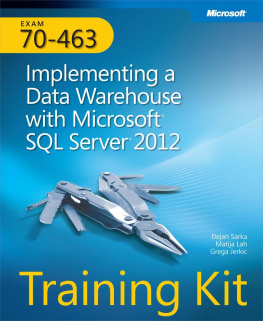
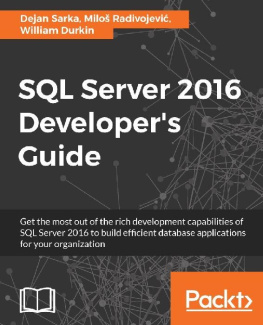



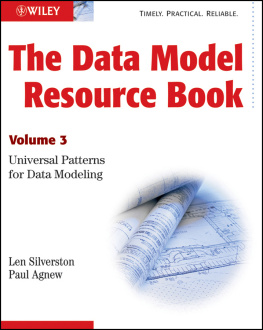
![Dejan Sarka [Dejan Sarka] - Data Science with SQL Server Quick Start Guide](/uploads/posts/book/119640/thumbs/dejan-sarka-dejan-sarka-data-science-with-sql.jpg)

